Onion growing secrets unlocked! Imagine pulling plump, juicy onions straight from your own backyard, ready to add a burst of flavor to your favorite dishes. Forget those bland, store-bought onions – we’re diving deep into the world of homegrown goodness, and I’m so excited to share my favorite tips and tricks with you!
For centuries, onions have been a staple in cuisines around the globe, revered not only for their culinary uses but also for their medicinal properties. From ancient Egypt, where they were symbols of eternity, to medieval Europe, where they were believed to ward off disease, onions have a rich and fascinating history. But let’s be honest, sometimes growing them can feel like a mystery, right?
That’s where this DIY guide comes in. I’ve compiled a collection of simple yet effective techniques that will transform your onion-growing game. Whether you’re a seasoned gardener or just starting out, these onion growing secrets will help you achieve a bountiful harvest. We’ll cover everything from choosing the right varieties for your climate to mastering the art of watering and fertilizing.
Why do you need these hacks? Because growing your own onions is not only incredibly rewarding, but it also allows you to control the quality and freshness of your food. Plus, there’s nothing quite like the satisfaction of knowing you grew something delicious from seed to table. So, grab your gardening gloves, and let’s get started on this exciting journey together!
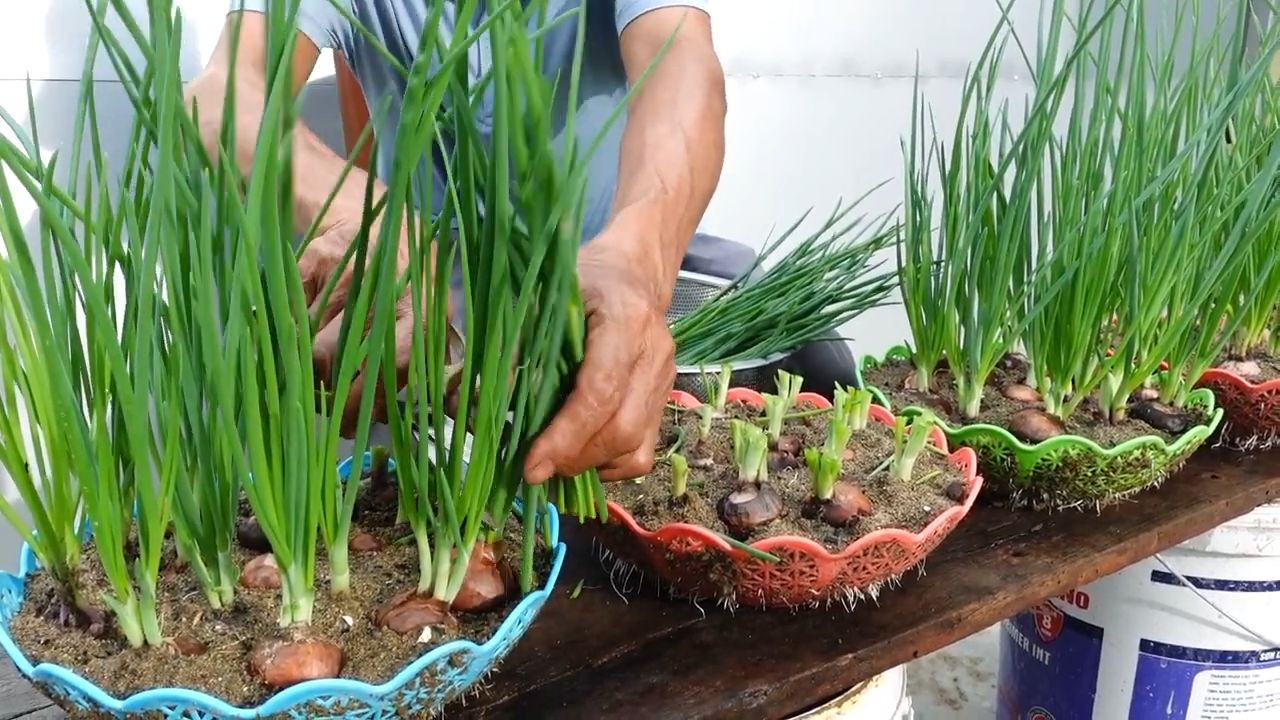
Zwiebelanbau-Geheimnisse: So erntest du riesige, gesunde Zwiebeln!
Hallo liebe Gartenfreunde! Ich bin total begeistert, euch heute meine besten Tipps und Tricks für den Zwiebelanbau zu verraten. Ich habe jahrelang experimentiert und gelernt, und jetzt kann ich euch versprechen: Mit diesen Geheimnissen werdet ihr eine fantastische Zwiebelernte einfahren! Keine kleinen, mickrigen Zwiebelchen mehr, sondern pralle, gesunde und leckere Exemplare. Los geht’s!
Die Grundlagen: Standort, Boden und Sortenwahl
Bevor wir uns ins Detail stürzen, müssen wir die Basis schaffen. Der richtige Standort, der passende Boden und die Wahl der richtigen Zwiebelsorte sind entscheidend für den Erfolg.
* Standort: Zwiebeln lieben die Sonne! Wählt einen Standort, der mindestens 6-8 Stunden direkte Sonneneinstrahlung pro Tag bekommt. Je mehr Sonne, desto besser!
* Boden: Der Boden sollte locker, gut durchlässig und reich an organischen Stoffen sein. Zwiebeln mögen keine Staunässe, da ihre Wurzeln sonst faulen können.
* Sortenwahl: Es gibt unzählige Zwiebelsorten, und die Wahl hängt von eurem Geschmack und eurem Klima ab. Einige beliebte Sorten sind:
* Gelbe Zwiebeln: Vielseitig, gut lagerfähig, ideal zum Kochen.
* Rote Zwiebeln: Milderer Geschmack, toll für Salate und zum Grillen.
* Weiße Zwiebeln: Scharfer Geschmack, gut für mexikanische Gerichte.
* Gemüsezwiebeln: Riesig, süßlich, perfekt für Zwiebelringe.
Aussaat oder Steckzwiebeln?
Ihr habt zwei Möglichkeiten, Zwiebeln anzubauen: durch Aussaat von Samen oder durch das Pflanzen von Steckzwiebeln. Beide Methoden haben ihre Vor- und Nachteile.
* Aussaat:
* Vorteile: Günstiger, größere Sortenvielfalt, weniger Krankheiten.
* Nachteile: Längere Anbauzeit, mehr Aufwand bei der Voranzucht.
* Steckzwiebeln:
* Vorteile: Schnellere Ernte, einfacher zu pflanzen.
* Nachteile: Teurer, geringere Sortenvielfalt, anfälliger für Krankheiten.
Ich persönlich bevorzuge Steckzwiebeln, weil sie einfach schneller und unkomplizierter sind. Aber wenn ihr Zeit und Geduld habt, könnt ihr auch gerne Zwiebeln aussäen.
Schritt-für-Schritt-Anleitung: Zwiebeln pflanzen (Steckzwiebeln)
So, jetzt geht’s ans Eingemachte! Hier ist meine detaillierte Anleitung für das Pflanzen von Steckzwiebeln:
1. Bodenvorbereitung: Lockert den Boden gründlich auf und entfernt Unkraut. Mischt Kompost oder gut verrotteten Mist unter, um den Boden mit Nährstoffen anzureichern. Ich gebe auch gerne etwas Hornspäne dazu, das ist ein super Langzeitdünger.
2. Pflanzzeitpunkt: Der beste Zeitpunkt zum Pflanzen von Steckzwiebeln ist im Frühjahr, sobald der Boden frostfrei ist. In milden Regionen könnt ihr auch im Herbst pflanzen.
3. Pflanzabstand: Pflanzt die Steckzwiebeln in einem Abstand von etwa 10-15 cm in der Reihe und 20-30 cm zwischen den Reihen. So haben die Zwiebeln genug Platz zum Wachsen.
4. Pflanztiefe: Drückt die Steckzwiebeln so tief in die Erde, dass nur noch die Spitze herausschaut. Achtet darauf, dass die Wurzeln nach unten zeigen.
5. Angießen: Gießt die Zwiebeln nach dem Pflanzen gründlich an. Das hilft ihnen, schnell Wurzeln zu schlagen.
Schritt-für-Schritt-Anleitung: Zwiebeln aussäen (Voranzucht)
Wenn ihr euch für die Aussaat entschieden habt, müsst ihr die Zwiebeln vorziehen. So geht’s:
1. Aussaatgefäße vorbereiten: Füllt Anzuchtschalen oder kleine Töpfe mit Anzuchterde.
2. Aussaat: Säet die Zwiebelsamen etwa 1 cm tief in die Erde.
3. Angießen: Gießt die Erde vorsichtig an, am besten mit einer Sprühflasche.
4. Standort: Stellt die Anzuchtschalen an einen hellen und warmen Ort. Die ideale Keimtemperatur liegt bei etwa 18-20°C.
5. Feuchtigkeit: Haltet die Erde feucht, aber nicht nass.
6. Pikieren: Sobald die Sämlinge groß genug sind (etwa 5-7 cm hoch), könnt ihr sie pikieren, d.h. in größere Töpfe umpflanzen.
7. Auspflanzen: Nach den letzten Frösten könnt ihr die Zwiebelpflanzen ins Freiland auspflanzen. Achtet dabei auf den gleichen Pflanzabstand wie bei Steckzwiebeln.
Die Pflege: Gießen, Düngen und Unkrautbekämpfung
Nach dem Pflanzen oder Auspflanzen ist die richtige Pflege entscheidend für eine reiche Ernte.
* Gießen: Zwiebeln brauchen regelmäßig Wasser, besonders während der Wachstumsphase. Achtet darauf, dass der Boden immer leicht feucht ist, aber vermeidet Staunässe.
* Düngen: Düngt die Zwiebeln regelmäßig mit einem organischen Dünger. Ich verwende gerne Komposttee oder verdünnte Brennnesseljauche. Das stärkt die Pflanzen und fördert das Wachstum.
* Unkrautbekämpfung: Haltet das Beet unkrautfrei. Unkraut konkurriert mit den Zwiebeln um Nährstoffe und Wasser. Ihr könnt das Unkraut entweder von Hand jäten oder eine Mulchschicht ausbringen.
* Boden lockern: Lockert den Boden regelmäßig auf, um die Belüftung zu verbessern.
Schutz vor Schädlingen und Krankheiten
Zwiebeln können von verschiedenen Schädlingen und Krankheiten befallen werden. Hier sind einige Tipps, wie ihr eure Zwiebeln schützen könnt:
* Zwiebelfliege: Die Zwiebelfliege legt ihre Eier an den Zwiebeln ab, und die Larven fressen sich in die Zwiebeln hinein. Ihr könnt eure Zwiebeln mit einem Kulturschutznetz schützen.
* Falscher Mehltau: Falscher Mehltau ist eine Pilzkrankheit, die sich durch einen grauen Belag auf den Blättern äußert. Sorgt für eine gute Belüftung und vermeidet Staunässe. Bei Bedarf könnt ihr ein Fungizid einsetzen.
* Zwiebelrost: Zwiebelrost ist eine weitere Pilzkrankheit, die sich durch orangefarbene Pusteln auf den Blättern äußert. Entfernt befallene Blätter und sorgt für eine gute Belüftung.
Der richtige Zeitpunkt für die Ernte
Der Zeitpunkt der Ernte hängt von der Sorte und dem Zeitpunkt der Pflanzung ab. In der Regel sind Zwiebeln erntereif, wenn das Laub gelb wird und umknickt.
1. Ernte: Zieht die Zwiebeln vorsichtig aus der Erde.
2. Trocknen: Lasst die Zwiebeln einige Tage an einem trockenen und luftigen Ort trocknen.
3. Lagern: Lagert die getrockneten Zwiebeln an einem kühlen, trockenen und dunklen Ort. So halten sie sich mehrere Monate.
Zusätzliche Tipps und Tricks für eine Super-Ernte
Hier sind noch ein paar zusätzliche Tipps, die euch helfen werden, eure Zwiebelernte zu maximieren:
* Fruchtfolge: Baut Zwiebeln nicht jedes Jahr am selben Standort an. Wechselt die Kulturen, um Krankheiten und Schädlingen vorzubeugen.
* Beetnachbarn: Gute Beetnachbarn für Zwiebeln sind Karotten, Kamille und Ringelblumen. Sie halten Schädlinge fern und fördern das Wachstum.
* Zwiebelblüten: Wenn eure Zwiebeln blühen, solltet ihr die Blüten entfernen. Das len
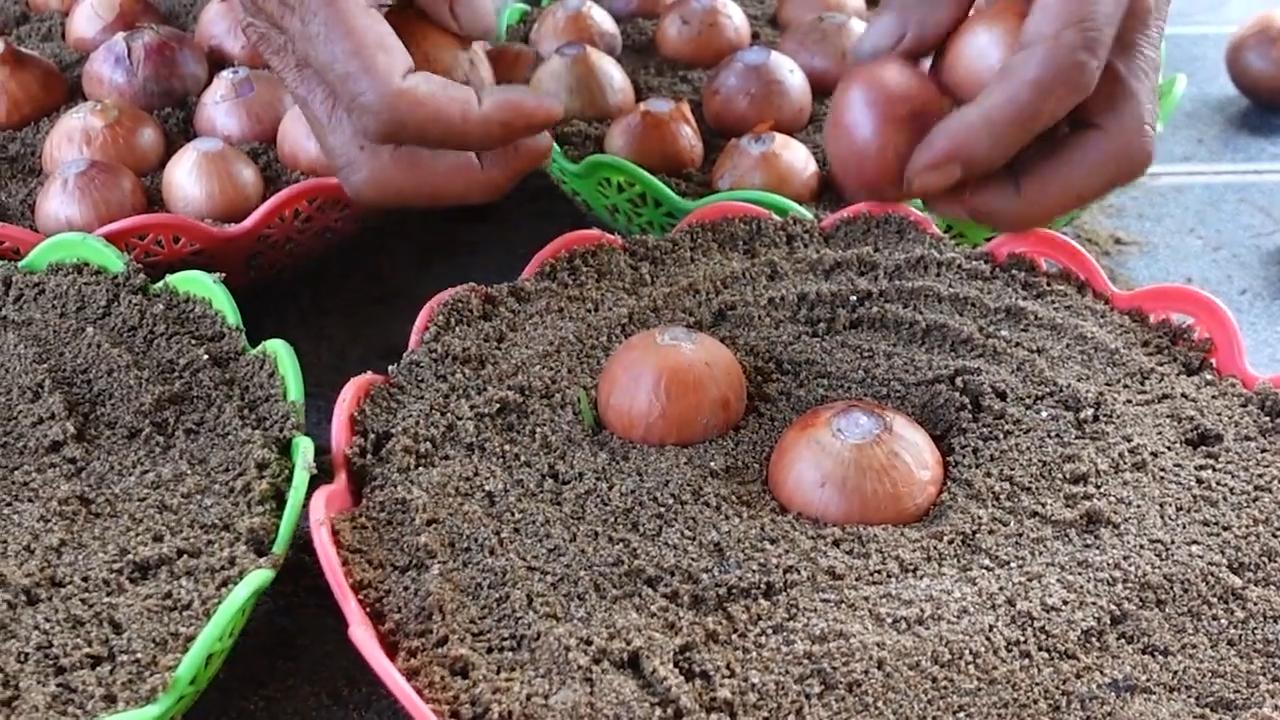
Conclusion
So, there you have it! Unlocking these onion growing secrets isn’t just about saving a few dollars at the grocery store; it’s about connecting with the earth, understanding the life cycle of a plant, and experiencing the unparalleled satisfaction of harvesting something you nurtured from a tiny seed or set. These methods, passed down through generations and refined by modern understanding, offer a pathway to consistently producing plump, flavorful onions that will elevate your culinary creations.
Why is this a must-try? Because store-bought onions, while convenient, often lack the vibrant flavor and freshness of homegrown varieties. Plus, you have complete control over the growing process, ensuring your onions are free from unwanted pesticides and herbicides. Imagine the pride you’ll feel serving a dish featuring onions you cultivated yourself!
But the journey doesn’t end here. Feel free to experiment with different onion varieties to discover your favorites. Try red onions for their sharp bite in salads, yellow onions for their versatility in cooking, or sweet onions for caramelizing into delectable toppings. Consider companion planting – carrots and onions are a classic pairing that benefits both crops. You can also explore different soil amendments to optimize your onion’s growth. Some gardeners swear by adding bone meal for phosphorus, while others prefer compost tea for a boost of nutrients.
Don’t be afraid to tweak these onion growing secrets to suit your specific climate and soil conditions. Gardening is all about learning and adapting. Keep a journal to track your progress, noting what works well and what doesn’t. This will help you refine your techniques and become an even more successful onion grower over time.
We wholeheartedly encourage you to give these techniques a try. Whether you’re a seasoned gardener or a complete beginner, you’ll find that growing onions is a rewarding and surprisingly easy endeavor. The taste of a freshly harvested onion, bursting with flavor, is an experience you won’t soon forget.
And most importantly, we want to hear about your experiences! Share your successes, your challenges, and your own unique tips and tricks in the comments below. Let’s build a community of onion enthusiasts, sharing our knowledge and inspiring each other to grow the best onions possible. Your insights could be invaluable to someone just starting out, and we can all learn from each other’s experiences. So, get your hands dirty, embrace the process, and prepare to enjoy the fruits (or rather, the bulbs!) of your labor. Happy growing!
Frequently Asked Questions (FAQ)
Q: What is the best time of year to plant onions?
A: The best time to plant onions depends on your climate and whether you’re starting from seed, sets, or transplants. In general, for northern climates with cold winters, start seeds indoors 8-10 weeks before the last expected frost. Sets and transplants can be planted outdoors 2-4 weeks before the last frost. In southern climates with mild winters, you can plant sets and transplants in the fall for a spring harvest. The key is to ensure the soil is workable and the plants have enough time to mature before extreme temperatures arrive. Check your local extension office for specific recommendations for your region.
Q: What kind of soil do onions need?
A: Onions thrive in well-drained, fertile soil that is rich in organic matter. They prefer a slightly acidic to neutral pH, ideally between 6.0 and 7.0. Before planting, amend your soil with compost, well-rotted manure, or other organic materials to improve drainage and fertility. Avoid heavy clay soils, as they can become waterlogged and hinder bulb development. If you have clay soil, consider planting in raised beds or containers. Adding sand can also help improve drainage.
Q: How much sun do onions need?
A: Onions are sun-loving plants and require at least 6-8 hours of direct sunlight per day to produce large, healthy bulbs. Choose a planting location that receives full sun throughout the growing season. If you live in a particularly hot climate, some afternoon shade may be beneficial to prevent the plants from scorching.
Q: How often should I water my onions?
A: Onions need consistent moisture, especially during bulb formation. Water deeply and regularly, aiming to keep the soil consistently moist but not waterlogged. The frequency of watering will depend on your climate, soil type, and rainfall. Check the soil moisture regularly and water when the top inch feels dry to the touch. Avoid overhead watering, as this can promote fungal diseases. Drip irrigation or soaker hoses are ideal for delivering water directly to the roots.
Q: What are onion sets, and how do I plant them?
A: Onion sets are small, immature onion bulbs that have been partially grown and then dried. They are a popular and easy way to start onions, especially for beginners. To plant onion sets, simply push them into the soil, pointy side up, about 1-2 inches deep and 4-6 inches apart. Ensure the top of the set is just barely covered with soil. Water well after planting.
Q: How do I fertilize my onions?
A: Onions are heavy feeders and benefit from regular fertilization. Apply a balanced fertilizer (e.g., 10-10-10) at planting time, following the package instructions. Side-dress with nitrogen fertilizer every 2-3 weeks during the growing season to promote leafy growth and bulb development. Avoid over-fertilizing, as this can lead to excessive top growth at the expense of bulb size. Organic options include fish emulsion, compost tea, and blood meal.
Q: How do I know when my onions are ready to harvest?
A: Onions are typically ready to harvest when the tops begin to fall over and turn yellow or brown. This indicates that the bulb has reached its full size and is starting to mature. You can also gently dig around the base of the plant to check the size of the bulb. Once the tops have fallen over, stop watering and allow the bulbs to dry out in the ground for a few days.
Q: How do I cure and store my onions?
A: Curing is essential for extending the storage life of your onions. After harvesting, gently brush off any excess soil and lay the onions out in a single layer in a well-ventilated, dry place, such as a garage or shed. Allow them to cure for 2-3 weeks, or until the necks are completely dry and the outer skins are papery. Once cured, trim the roots and cut the tops back to about 1-2 inches. Store the onions in a cool, dry, and dark place, such as a pantry or basement. Avoid storing them in plastic bags, as this can trap moisture and promote spoilage. Braiding the tops together and hanging them is another effective storage method.
Q: What are some common onion pests and diseases?
A: Common onion pests include onion maggots, thrips, and onion aphids. Diseases include downy mildew, botrytis blight, and white rot. Practice good garden hygiene to prevent pest and disease problems. Rotate your crops regularly, remove any infected plants promptly, and use organic pest control methods, such as insecticidal soap or neem oil. Ensure good air circulation around your plants to reduce the risk of fungal diseases.
Q: Can I grow onions in containers?
A: Yes, onions can be successfully grown in containers, especially if you have limited garden space. Choose a large container (at least 12 inches in diameter) with good drainage holes. Use a well-draining potting mix and follow the same planting and care instructions as for growing onions in the ground. Container-grown onions may require more frequent watering and fertilization, as the soil tends to dry out more quickly.

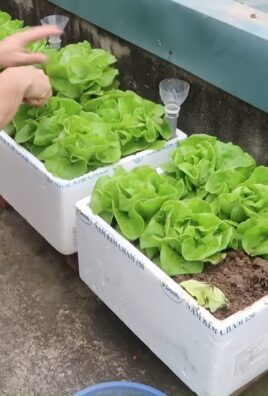
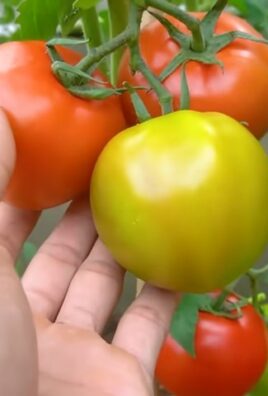
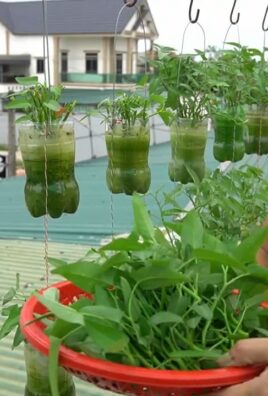
Leave a Comment